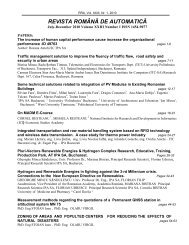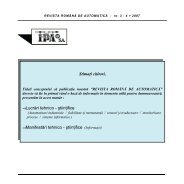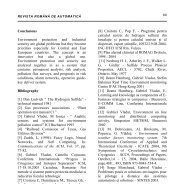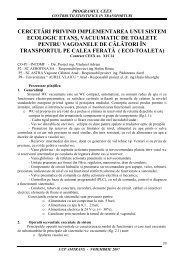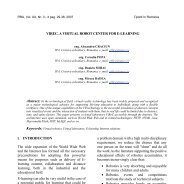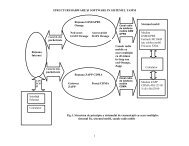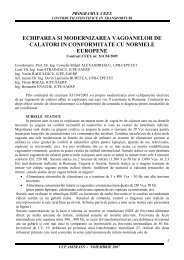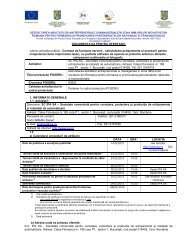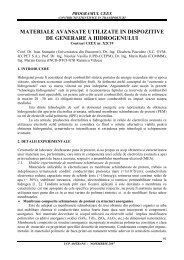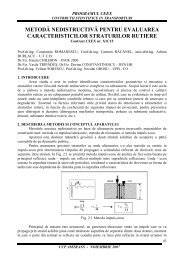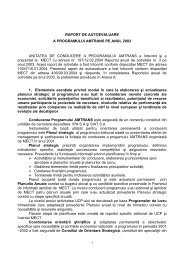REVISTA ROMÃNÄ DE AUTOMATICÄ - IPA SA
REVISTA ROMÃNÄ DE AUTOMATICÄ - IPA SA
REVISTA ROMÃNÄ DE AUTOMATICÄ - IPA SA
Create successful ePaper yourself
Turn your PDF publications into a flip-book with our unique Google optimized e-Paper software.
<strong>REVISTA</strong> ROMÂNĂ <strong>DE</strong> AUTOMATICĂ<br />
35<br />
Because the tombstoning affects especially<br />
the small chip components, the package types<br />
of lead-free chip components used was 0402,<br />
0603, 0805, 1206.<br />
For the experiment lead-free was used , noclean<br />
solder paste OM338T, type 3, (25-<br />
45µm per IPC J-STD-005) from Coockson<br />
Electronics, selected before after special<br />
experiments. The references for the dates of<br />
case dimensions (table 1 – IPC 782) and pads<br />
geometry (table 2) are given in fig. 5a, b.<br />
Tab. 1. Case dimensions<br />
According to geometrical references for cases<br />
and pads, the authors take into consideration<br />
the following hypothesis for stencils<br />
apertures design (table 2): - apertures<br />
dimensions identical with corresponding pads<br />
dimensions; with axial replacement to assure<br />
Smin (Ya4, Xa4); increasing 20% axial and<br />
10% radial (Ya1, Xa1); increasing 10% axial<br />
and 20% radial (Ya3, Xa3,). axial reducing<br />
(Ya1, Xa1), according with:<br />
Xa1 = Wmax, Ya1 = Tmax+2(Cp-Lmin)<br />
(3)<br />
Fig. 5. a. Case dimensions,<br />
b. Pads geometry<br />
In order to assure different volume of solder<br />
paste two stencils were made with different<br />
thickness 0.125mm and 0.150mm according<br />
with apertures from table 4. The authors also<br />
take into consideration one classical solution<br />
for stencils, 0.150mm thickness with 10%<br />
reducing apertures dimensions compared to<br />
pad dimensions and one stencil 0.125mm<br />
without reduction.<br />
Tab. 2. Stencil apertures dimensions<br />
For reflow soldering, the VPS SLC504 equipment from IBL company was used.<br />
4. Results<br />
The solder joints were analyzed according to<br />
the IPC-A-610 D. The solder joints grown<br />
from solder paste deposits follow out stencils<br />
apertures type 1 - 4 shown in figure 6c, d.<br />
The results regarding tombstoning after<br />
thermal profile optimization (figure 7) are<br />
presented in tables 3 and 4.



